DigiTech GSP1101 User Manual
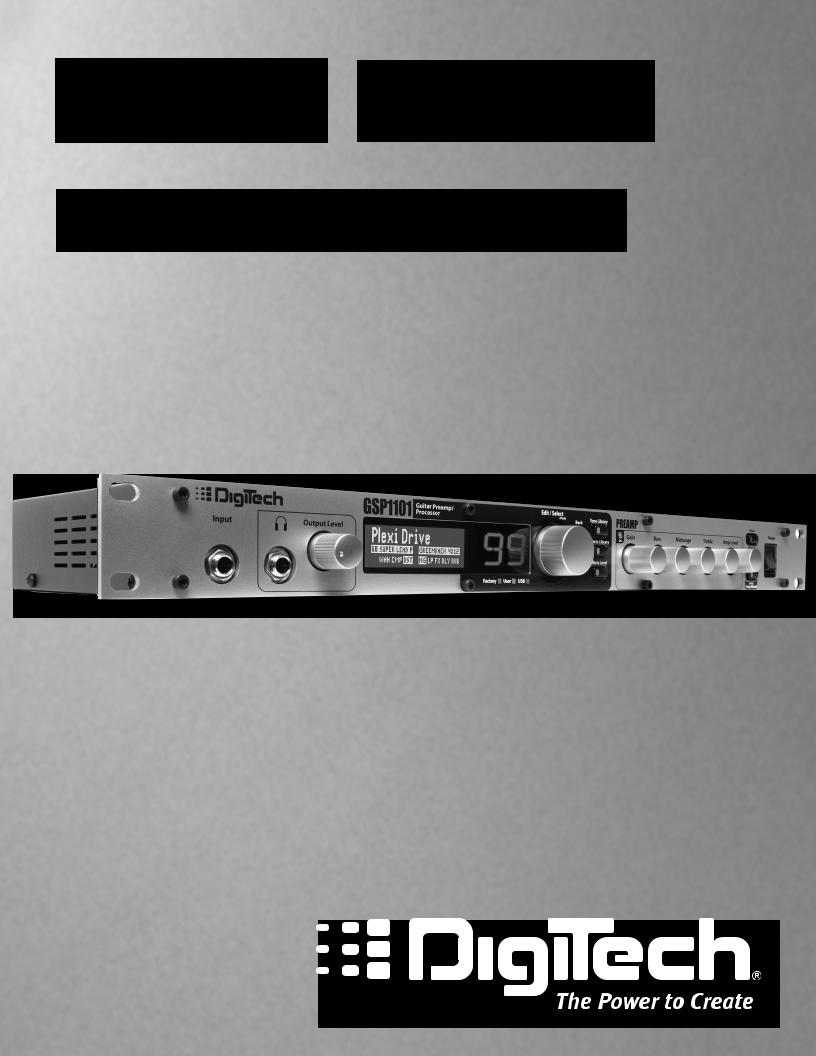
GSP1101 Guitar Preamp/
Processor
Owner’s Manual
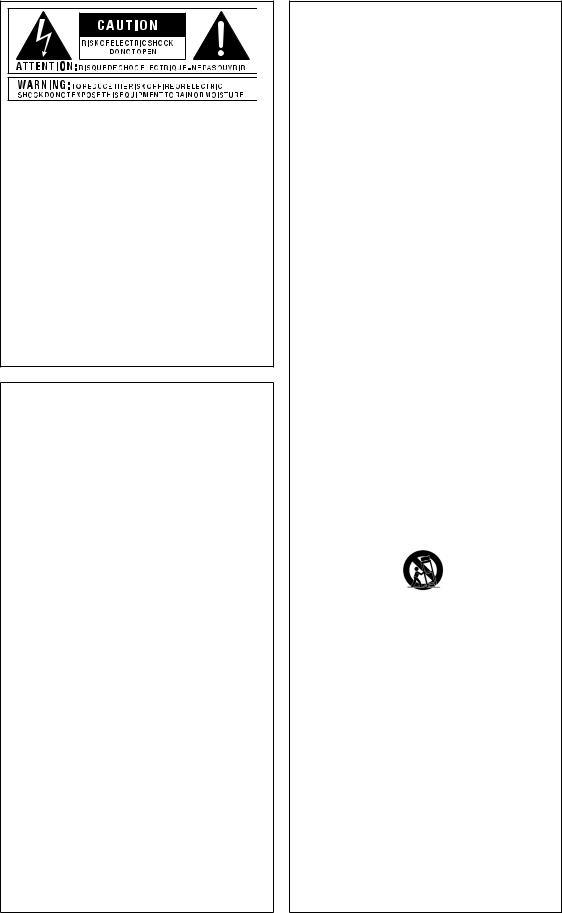
IMPORTANT SAFETY INSTRUCTIONS
The symbols shown above are internationally accepted symbols that warn of potential hazards with electrical products. The lightning flash with arrowpoint in an equilateral triangle means that there are dangerous voltages present within the unit. The exclamation point in an equilateral triangle indicates that it is necessary for the user to refer to the owner’s manual.
These symbols warn that there are no user serviceable parts inside the unit. Do not open the unit. Do not attempt to service the unit yourself. Refer all servicing to qualified personnel. Opening the chassis for any reason will void the manufacturer’s warranty. Do not get the unit wet. If liquid is spilled on the unit, shut it off immediately and take it to a dealer for service. Disconnect the unit during storms to prevent damage.
Safety Instructions
Notice For Customers If Your Unit Is Equipped With A Power Cord.
WARNING: THIS APPLIANCE SHALL BE CONNECTED TO A MAINS SOCKET OUTLET WITH A PROTECTIVE EARTHING CONNECTION.
The cores in the mains lead are coloured in accordance with the following code:
GREEN and YELLOW - Earth |
BLUE - Neutral |
BROWN - Live |
As colours of the cores in the mains lead of this appliance may not correspond with the coloured markings identifying the terminals in your plug, proceed as follows:
•The core which is coloured green and yellow must be connected to the terminal in the plug marked with the letter E, or with the earth symbol, or coloured green, or green and yellow.
•The core which is coloured blue must be connected to the terminal marked N or coloured black.
•The core which is coloured brown must be connected to the terminal marked L or coloured red.
This equipment may require the use of a different line cord, attachment plug, or both, depending on the available power source at installation. If the attachment plug needs to be changed, refer servicing to qualified service personnel who should refer to the table below. The green/yellow wire shall be connected directly to the units chassis.
CONDUCTOR |
WIRE COLOR |
|||
|
|
Normal |
Alt |
|
L |
LIVE |
BROWN |
BLACK |
|
N |
NEUTRAL |
BLUE |
WHITE |
|
E |
EARTH GND |
GREEN/ |
GREEN |
|
YEL |
||||
|
|
|
||
WARNING: If the ground is defeated, certain fault conditions in the unit or in the system to which it is connected can result in full line voltage between chassis and earth ground. Severe injury or death can then result if the chassis and earth ground are touched simultaneously.
WARNING FOR YOUR PROTECTION PLEASE READ THE FOLLOWING:
KEEP THESE INSTRUCTIONS
HEED ALL WARNINGS
FOLLOW ALL INSTRUCTIONS
The apparatus shall not be exposed to dripping or splashing liquid and no object filled with liquid, such as vases, shall be placed on the apparatus
CLEAN ONLY WITH A DRY CLOTH.
DO NOT BLOCK ANY OF THE VENTILATION OPENINGS. INSTALL IN ACCORDANCE WITH THE MANUFACTURER’S INSTRUCTIONS.
DO NOT INSTALL NEAR ANY HEAT SOURCES SUCH AS RADIATORS, HEAT REGISTERS, STOVES, OR OTHER APPARATUS (INCLUDING AMPLIFIERS) THAT PRODUCE HEAT.
ONLY USE ATTACHMENTS/ACCESSORIES SPECIFIED BY THE MANUFACTURER.
UNPLUG THIS APPARATUS DURING LIGHTNING STORMS OR WHEN UNUSED FOR LONG PERIODS OF TIME.
Do not defeat the safety purpose of the polarized or grounding-type plug. A polarized plug has two blades with one wider than the other. A grounding type plug has two blades and a third grounding prong. The wide blade or third prong are provided for your safety. If the provided plug does not fit your outlet, consult an electrician for replacement of the obsolete outlet.
Protect the power cord from being walked on or pinched particularly at plugs, convenience receptacles, and the point where they exit from the apparatus.
Use only with the cart stand, tripod bracket, or table specified by the manufacture, or sold with the apparatus. When a cart is used, use caution when moving the cart/apparatus combination to avoid injury from tip-over.
Refer all servicing to to qualified service personnel. Servicing is required when the apparatus has been damaged in any way, such as power-supply cord or plug is damaged, liquid has been spilled or objects have fallen into the apparatus, the apparatus has been exposed to rain or moisture, does not operate normally, or has been dropped.
POWER ON/OFF SWITCH: For products provided with a power switch, the power switch DOES NOT break the connection from the mains.
MAINS DISCONNECT: The plug shall remain readily operable. For rack-mount or installation where plug is not accessible, an all-pole mains switch with a contact separation of at least 3 mm in each pole shall be incorporated into the electrical installation of the rack or building.
FOR UNITS EQUIPPED WITH EXTERNALLY ACCESSIBLE FUSE RECEPTACLE:
Replace fuse with same type and rating only.
MULTIPLE-INPUT VOLTAGE: This equipment may require the use of a different line cord, attachment plug, or both, depending on the available power source at installation. Connect this equipment only to the power source indicated on the equipment rear panel. To reduce the risk of fire or electric shock, refer servicing to qualified service personnel or equivalent.
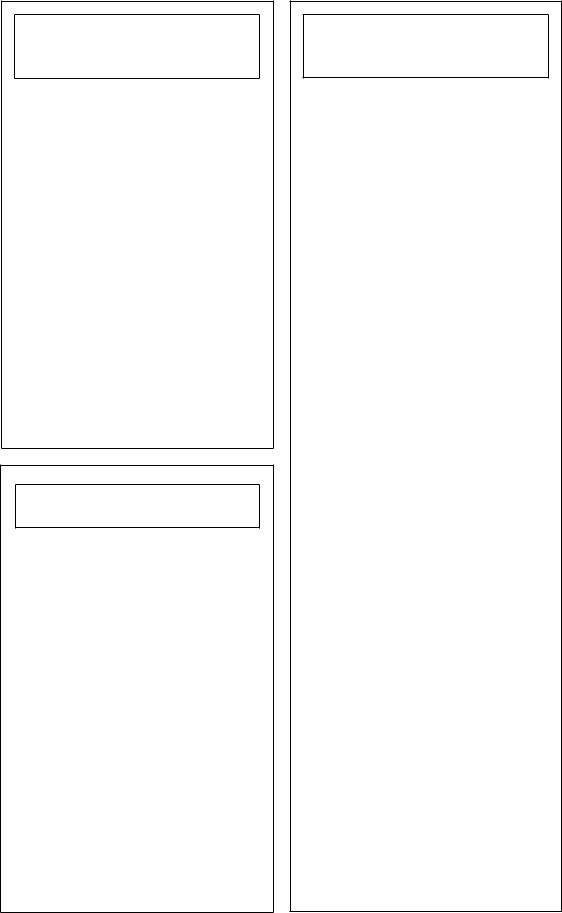
IMPORTANT SAFETY INSTRUCTIONS
ELECTROMAGNETIC
COMPATIBILITY
This unit conforms to the Product Specifications noted on the Declaration of Conformity. Operation is subject to the following two conditions:
•this device may not cause harmful interference, and
•this device must accept any interference received, including interference that may cause undesired operation.
Operation of this unit within significant electromagnetic fields should be avoided.
•use only shielded interconnecting cables.
U.K. MAINS PLUG WARNING
A molded mains plug that has been cut off from the cord is unsafe. Discard the mains plug at a suitable disposal facility.
NEVER UNDER ANY CIRCUMSTANCES SHOULD YOU INSERT A DAMAGED OR CUT MAINS PLUG INTO A 13 AMP POWER SOCKET.
Do not use the mains plug without the fuse cover in place. Replacement fuse covers can be obtained from your local retailer. Replacement fuses are 13 amps and MUST be ASTA approved to BS1362.
DECLARATION OF
CONFORMITY
Manufacturer’s Name: |
DigiTech |
|
Manufacturer’s Address: |
8760 S. Sandy Pkwy. |
|
|
|
Sandy, UT 84070, USA |
Declares that the product: |
|
|
Product name: |
GSP 1101 |
|
Note: Product name may be suffixed by the letters-EU.
Product option: None
Conforms to the following Product Specifications:
Safety: IEC 60065 (7th ed. 2001)
EMC: EN 55013 (2001 + A1)
EN 55020 (1998)
Supplementary Information:
The product herewith complies with the requirements of the Low Voltage Directive 73/23/EEC and the EMC Directive 89/336/EEC as amended by Directive 93/68/EEC.
Vice-President of Engineering-MI
8760 S. Sandy Parkway
Sandy, Utah 84070, USA
Date: April 9, 2007
European Contact: Your local Digitech
Sales and Service Office or
Harman Music Group
8760 S. Sandy Pkwy.
Sandy, UT
84070 USA
Ph: (801) 566-8800
Fax: (801) 566-7005
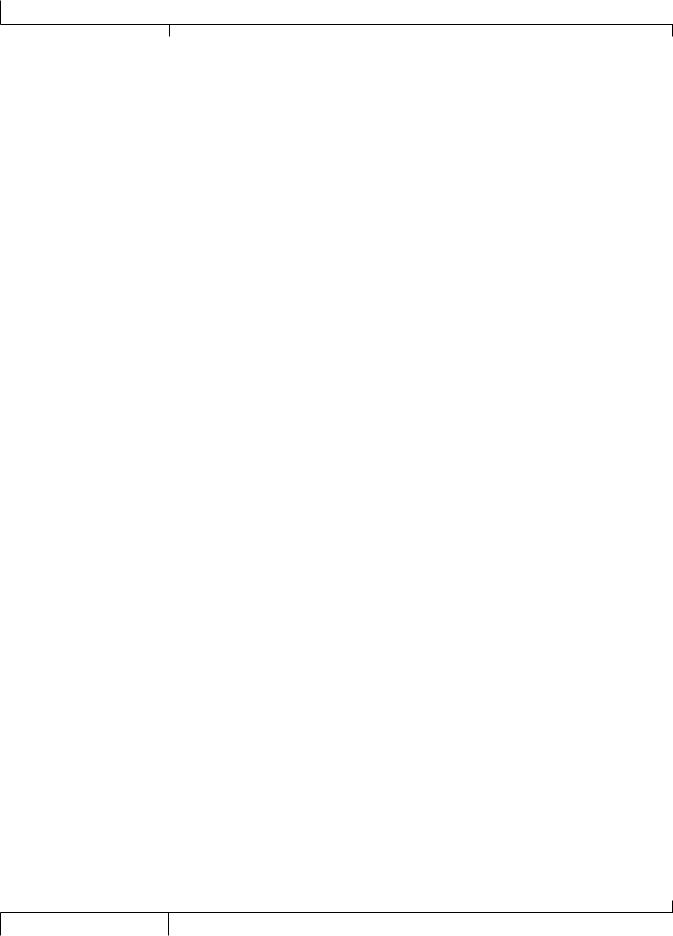
Warranty
We at DigiTech are very proud of our products and back-up each one we sell with the following warranty:
1.The warranty registration card must be mailed within ten days after purchase date to validate this warranty.
2.DigiTech warrants this product, when used solely within the U.S., to be free from defects in materials and workmanship under normal use and service.
3.DigiTech liability under this warranty is limited to repairing or replacing defective materials that show evidence of defect, provided the product is returned to DigiTech WITH RETURN AUTHORIZATION, where all parts and labor will be covered up to a period of one year.A Return Authorization number may be obtained from DigiTech by telephone.The company shall not be liable for any consequential damage as a result of the product’s use in any circuit or assembly.
4.Proof-of-purchase is considered to be the burden of the consumer.
5.DigiTech reserves the right to make changes in design, or make additions to, or improvements upon this product without incurring any obligation to install the same on products previously manufactured.
6.The consumer forfeits the benefits of this warranty if the product’s main assembly
is opened and tampered with by anyone other than a certified DigiTech technician or, if the product is used with AC voltages outside of the range suggested by the manufacturer.
7.The foregoing is in lieu of all other warranties, expressed or implied, and DigiTech neither assumes nor authorizes any person to assume any obligation or liability in connection with the sale of this product. In no event shall DigiTech or its dealers be liable for special or consequential damages or from any delay in the performance of this warranty due to causes beyond their control.
NOTE: The information contained in this manual is subject to change at any time without notification. Some information contained in this manual may also be inaccurate due to undocumented changes in the product or operating system since this version of the manual was completed.The information contained in this version of the owner’s manual supersedes all previous versions.
Disclaimer:AutoYa, DigiTech, DOD, Death Metal, Johnson Amplification, Grunge, Lexicon, Multi Chorus,Whammy, and YaYa are trademarks of Harman International Industries, Inc. Other product names modeled in this product are trademarks of their respective companies that do not endorse and are not associated or affiliated with DigiTech or Harman International Industries, Inc.They are trademarks of other manufacturers and were used merely to identify products whose sounds were reviewed in the creation of this product.
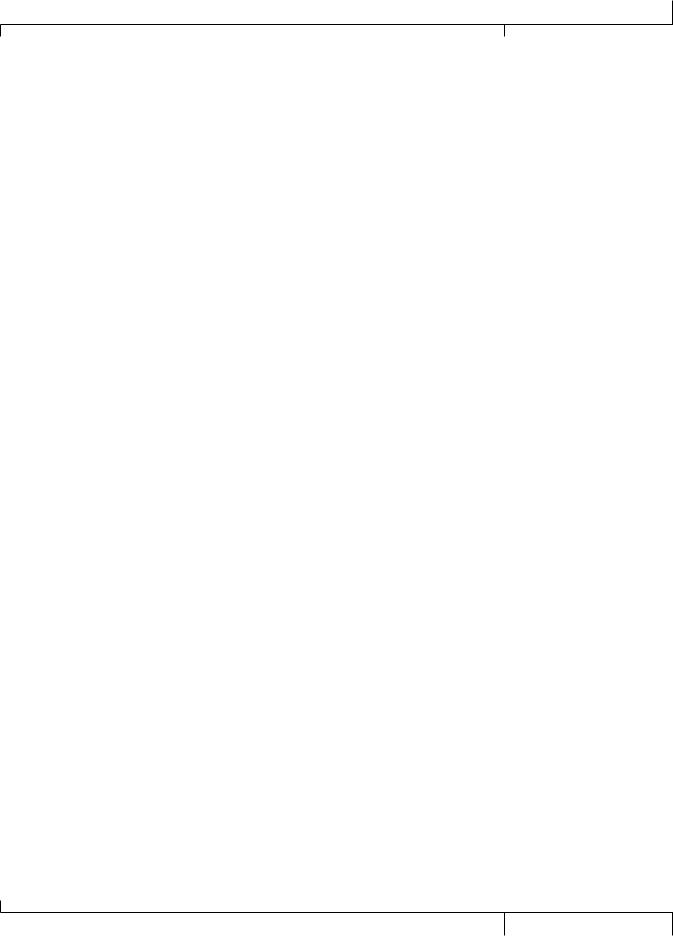
Contents |
|
Introduction................................... |
1 |
Quick Start..................................... |
1 |
Make Connections - Basic Setup...... |
1 |
Select a Preset....................................... |
1 |
Edit and Store a Preset........................ |
2 |
The Quick Edit Screen........................ |
3 |
Front Panel..................................... |
4 |
Rear Panel...................................... |
6 |
Using the GSP1101....................... |
8 |
GSP1101 Basics..................................... |
8 |
Setup Wizard.......................................... |
9 |
The Preset Screen................................ |
13 |
Selecting a Preset.................................. |
14 |
Editing a Preset - |
|
Tone and Effect Libraries............. |
14 |
Editing a Preset - |
|
Individual Parameters.................... |
16 |
Editing Expression Links...................... |
17 |
More About Editing Presets............... |
18 |
Seamless Time........................................ |
19 |
LFO Settings........................................... |
19 |
Preset Level............................................ |
19 |
Main Menu Screen......................... |
20 |
Edit Effects / Preset........................... |
20 |
I/O Setup............................................. |
20 |
Global EQ............................................ |
20 |
MIDI Menu.......................................... |
20 |
Preset Load......................................... |
20 |
Version................................................. |
21 |
Factory Reset..................................... |
21 |
Contrast............................................... |
21 |
The Edit Effects/Preset screen........... |
22 |
WAH.................................................... |
23 |
COMPRESSOR ................................. |
23 |
DISTORTION..................................... |
24 |
PREAMP / CAB.................................. |
25 |
PARAMETRIC EQ............................. |
28 |
FX LOOP / PREAMP LOOP.......... |
29 |
GATE.................................................... |
29 |
CHORUS/FX...................................... |
30 |
DELAY.................................................. |
38 |
REVERB................................................ |
39 |
EXPRESSION LINKS........................ |
40 |
Seamless Time................................. |
41 |
LFO Settings.................................. |
42 |
PRESET LEVEL.................................... |
42 |
Global Functions............................ |
43 |
Guitar Tuner........................................... |
43 |
Global Menus......................................... |
43 |
I/O Setup................................................. |
43 |
1/4” Line Output Setup................... |
43 |
XLR Output ....................................... |
44 |
Type of Loop....................................... |
45 |
Global Cabinet................................... |
46 |
USB Setup............................................ |
46 |
Global EQ............................................... |
47 |
Contrast.................................................. |
48 |
Version..................................................... |
48 |
MIDI Menu.............................................. |
48 |
Preset Map.......................................... |
49 |
CC/Controller Map........................... |
49 |
Merge In > Thru ............................... |
50 |
Send MIDI Prgms............................... |
50 |
MIDI Tempo ....................................... |
50 |
Preset Load............................................ |
50 |
Factory Reset................................. |
51 |
Specifications................................. |
52 |
MIDI Implementation Table......... |
54 |
Block Diagram............................... |
55 |
Preset List...................................... |
56 |
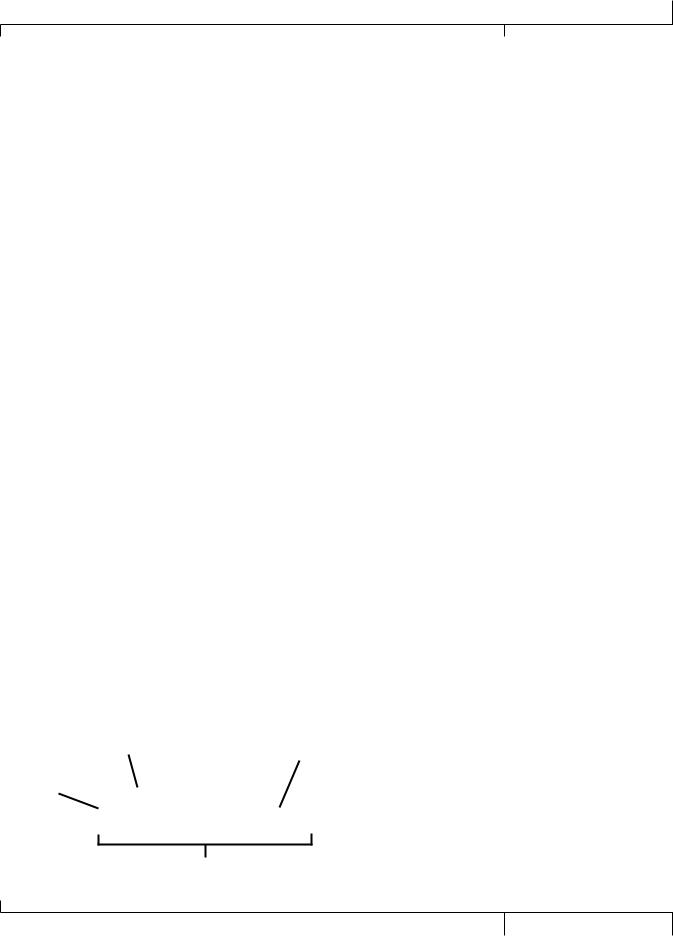
Introduction
Introduction
Congratulations and thank you for purchasing the GSP1101, the rackmount preamp/ processor that works with your existing tone without taking it over.
Please take a moment to make sure you have everything that’s included with your GSP1101 purchase:
•GSP1101 Guitar Preamp/Processor
•Power cord
•Warranty card
•USB Driver / X-Edit Editor/Librarian CD
The GSP1101 is extremely easy to use, but we recommend reading this brief manual to familiarize yourself with the GSP1101’s many features. If you just can’t wait to get started, refer to the very short Quick Start section below. It’ll get you up and running using a basic setup in practically no time at all.
Quick Start
Make Connections - Basic Setup
1.Make sure your amplifier is turned off and the volume is turned down.
2.Connect the power cord to the GSP1101’s power input (located on the back panel).
3.Connect the Left (Mono) Line Output (located on the back panel) to the guitar input of your amplifier.
4.Connect your guitar to the Input jack on the front panel.
5.Turn on the GSP1101.
6.Turn on your amplifier.
7.Gradually increase the volume until you reach a comfortable listening level.
Select a Preset
Turn the Edit/Select knob to scroll through different presets. By default, they load automatically.
Preset Name |
Cab Model |
|
Amp Model
Effects (highlighted are active)
GSP1101 Owner’s Manual
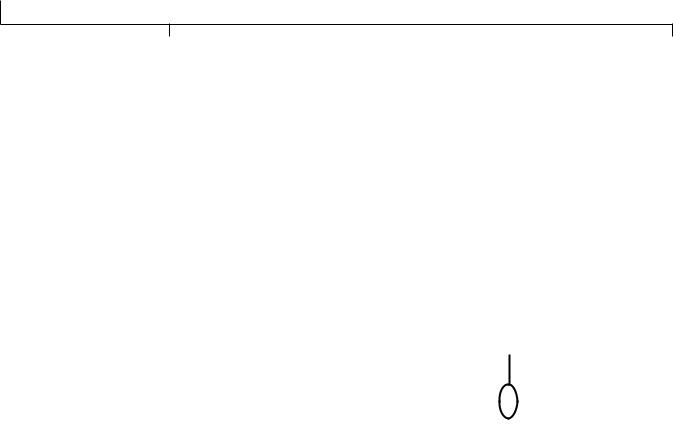
Quick Start
Edit and Store a Preset
The GSP1101 comes with 99 Factory presets and 99 User presets. Initially, the User presets are exact copies of the Factory presets. You can only store changes to a User preset. Factory presets can’t be changed.
To Edit a Preset
1.Press the Edit/Select knob twice.The Preset Edit screen appears.
2.Turn the Edit/Select knob to highlight an effect.
3.When the desired effect is highlighted, press the Edit/Select knob to open its Edit menu.
4.Turn the Edit/Select knob to highlight a parameter. If a triangular arrow appears to the right of a parameter, it means a sub-menu exists inside that parameter. If there is no arrow, but there is a value (like “Off” next to the “Global Cabinet” option), that means you can change the value by pressing the Edit/Select knob.
Arrows
5.Press the Edit/Select knob to edit the selected parameter.
6.Press and hold the Back button to return to the Preset screen.
7.Store your changes with the Store procedure (described below). If you don’t store your changes, they will be lost when you select another preset or turn off the GSP1101.
To Store/Copy a Preset
You can cancel this process at any time by pressing the Back button.
1.Press the Store button.The first character of the preset’s name flashes.
2.If you want to rename the preset:
Turn the Edit/Select knob to change the selected character. Turn the Gain knob to select a different character in the name.
Turn the Bass knob to move the entire name in the display. Note that characters that are “pushed” off the screen are deleted.
Turn the Midrange knob to switch the selected character between uppercase and lowercase.
3.Press the Store button again. The display reads “Location to Store” and the numeric display flashes.
4.Turn the Edit/Select knob to select a new location.
5.Press the Store button again.The preset is now saved.
|
|
GSP1101 Owner’s Manual |
|
|
|
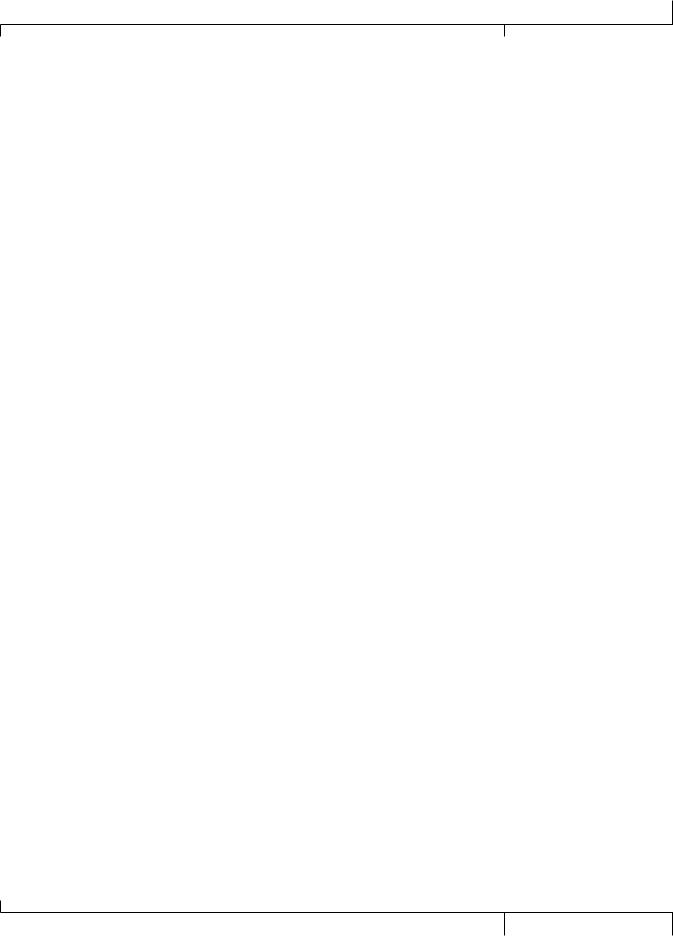
Quick Start
The Quick Edit Screen
This screen is a shortcut where you can see what effects are active, turn effects on or off, or quickly access effects, expression links, LFO settings, Seamless Time settings, and the preset level for editing.
To use the Quick Edit screen
1.From the Preset screen, press and hold the Edit/Select knob.The Quick Edit screen appears.
2.Turn the Edit/Select knob to move the cursor through the effects and setup menus.
3.Press the Edit/Select knob to turn the selected effect on or off (on the third row) OR
Press and hold the Edit/Select knob to edit the selected effect (on the third row) OR
Press the Edit/Select knob to edit the expression links, LFO settings, Seamless Time settings, or preset level (on the bottom row).
4.Press the Back button to go to the Main Menu screen. OR
Press and hold the Back button to return to the Preset screen
GSP1101 Owner’s Manual
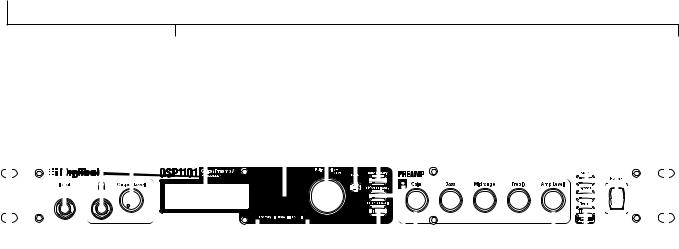
Front Panel
|
|
|
|
|
|
|
|
|
|
|
|
|
|
|
Front Panel |
|
|
|
|
10 |
|
|
15 |
|
|
|
|
|
|||||||||||||||||||||||
|
|
|
|
|
|
|
|
|
|
|
|
|
|
|
|
|
|
|
|
|
|
|
|
|
|
|
|
|
|
|
|||||||||||||||||||||
1 |
|
|
2 |
3 |
|
4 |
5 |
7 |
8 9 |
|
|
|
|
|
|
14 |
|
17 |
|
|
|||||||||||||||||||||||||||||||
|
|
|
|
|
|
|
|
|
|
|
|
||||||||||||||||||||||||||||||||||||||||
|
|
|
|
|
|
|
|
|
|
|
|
|
|
|
|
|
|
|
|
|
|
|
|
|
|
|
|
|
|
|
|
|
|
|
|
|
|
|
|
|
|
|
|
|
|
|
|
|
|
|
|
|
|
|
|
|
|
|
|
|
|
|
|
|
|
|
|
|
|
|
|
|
|
|
|
|
|
|
|
|
|
|
|
|
|
|
|
|
|
|
|
|
|
|
|
|
|
|
|
|
|
|
|
|
|
|
|
|
|
|
|
|
|
|
|
|
|
|
|
|
|
|
|
|
|
|
|
|
|
|
|
|
|
|
|
|
|
|
|
|
|
|
|
|
|
|
|
|
|
|
|
|
|
|
|
|
|
|
|
|
|
|
|
|
|
|
|
|
|
|
|
|
|
|
|
|
|
|
|
|
|
|
|
|
|
|
|
|
|
|
|
|
|
|
|
|
|
|
|
|
|
|
|
|
|
|
|
|
|
|
|
|
|
|
|
|
|
|
|
|
|
|
|
|
|
|
|
|
|
|
|
|
|
|
|
|
|
|
|
|
|
|
|
|
|
|
|
|
|
|
|
|
|
|
|
|
|
|
|
|
|
|
|
|
|
|
|
|
|
|
|
|
|
|
|
|
|
|
|
|
|
|
|
|
|
|
|
|
|
|
|
|
|
|
|
|
|
|
|
|
|
|
|
|
|
|
|
|
|
|
|
6 |
11 12 |
13 |
16 |
1.Input
This is the 1/4” instrument input. Connect an electric guitar or bass here.
2.Headphones
A stereo 1/4” output for connecting headphones.
3.Output Level
Controls the output level of Headphone, Line Outputs, and Mixer Outputs (optional). See page 44 for enabling variable output level control of Mixer (XLR) Outputs.
4.Graphic Display
The main display for viewing presets, effects, and navigating through all of the GSP1101 menu systems.
5.Numeric Display
Shows the currently selected preset number.
6.Factory / User / USB LEDs
These LEDs indicate whether a Factory or User preset is selected, and if the USB connection is active.
7.Edit/Select
Turn this knob to scroll through presets or parameters, and to adjust parameter values. Press this knob to edit a preset, select a parameter, or accept a parameter value.
8.Back
Press this button to step back and out of a menu, or to cancel a storing procedure.The Back button DOES NOT cancel changes you’ve made to a preset or menu, but does cancel and exit the Store procedure. From any menu, holding the back button down for about two seconds will take you back to the Preset screen.
|
|
GSP1101 Owner’s Manual |
|
|
|
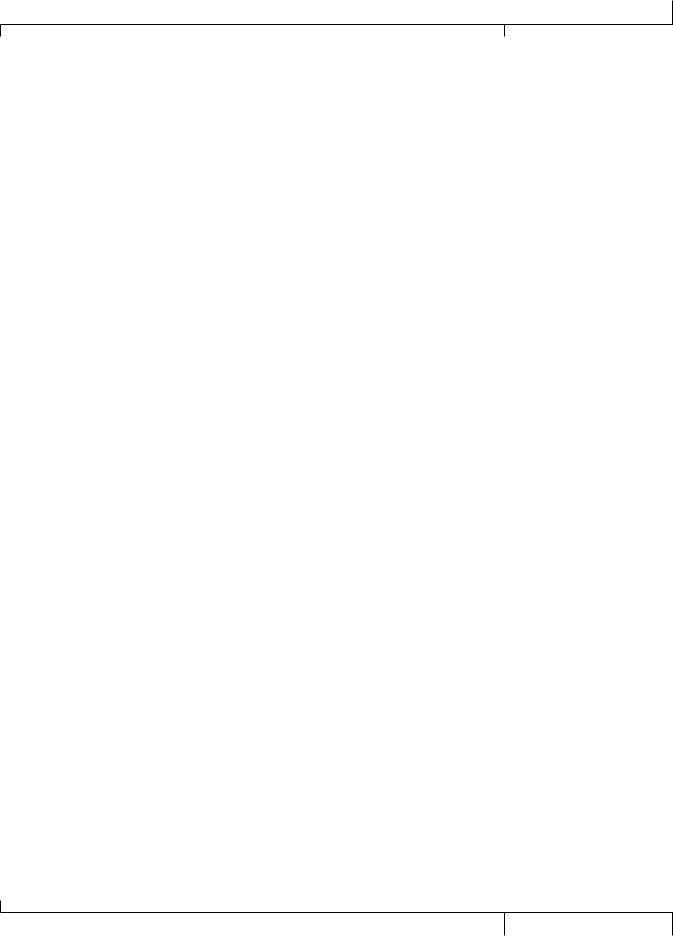
Front Panel
9.Tone Library
This button lets you select from several ready-made tone configurations comprised of Wah, Distortion, Compressor, Amp/Cabinet, and EQ. See page 14 for more information.
10.Effects Library
This button opens a palette of post-amp model effects and effects combinations (Chorus/FX, Delay, Reverb) that can be quickly accessed and auditioned. See page 14 for more information.
11.Effects Level
Press this button and use the Edit/Select knob to adjust the overall level of Chorus/FX, Delay, and Reverb effects.
12.Preamp On LED.
Indicates when the internal amp model is turned on and actively being heard. This LED will turn off when the internal amp modeling is turned off or when an external preamp is actively being used in the Preamp Loop.
13.Preamp Controls.
These five knobs are the amp model Gain, Bass, Midrange,Treble, and Level controls. Whenever an amp model is selected and active these controls make adjustments to the amp model’s tone.
14.Store
Initiates the procedure for storing and/or copying a preset.
15.Bypass.
Bypasses all effects and sends your guitar signal through the GSP1101 with no processing.
16.Tuner / Setup Wizard.
Press once to activate/deactivate the guitar tuner feature (see page 43 for more information). Hold to activate the Setup Wizard (see page 9 for more information), which guides you through a series of options to set up the GSP1101 for your particular use.
17.Power
Turns the GSP1101 on or off.
GSP1101 Owner’s Manual

Rear Panel
Rear Panel
1 |
2 |
3 |
4 |
5 |
6 |
7 |
8 |
9 |
10 |
11 |
12 13 |
1.Power Jack.
Attach the included power cord here.
2.USB
The USB jack connects the GSP1101 to a computer and serves two purposes. First, it lets the GSP1101 communicate with the X-Edit Editor/Librarian software. Second, it is used to stream four channels of audio (2 up/2 back) to and from the computer when using the GSP1101 with recording software. USB drivers must be installed prior to using the USB port.These can be found on the included CD.
3.Footswitch
This 1/4” jack connects the optional FS300 3-button footswitch. Functions include preset up, preset down, and bypass.
4.Expression
Connect any passive volume pedal here to control nearly any of the GSP1101 effects in real time. See page 40 for more information about assigning parameters to the Expression Pedal.
5.Configuration Port
This RJ45 jack is reserved for future use. Do not connect to an Eth ernet port.
The connected device will be damaged.
6.MIDI In
Connects to MIDI devices, letting them control the GSP1101. The GSP1101 responds to MIDI program changes and CC messages. See page 48 for more information about MIDI.
7.MIDI Thru
Passes on MIDI signals from the MIDI In jack to MIDI devices downstream. Can also be used for allowing the GSP1101 to transmit MIDI program changes to another device (See page 48 for more information about MIDI.)
|
|
GSP1101 Owner’s Manual |
|
|
|

Rear Panel
8.Mixer Outputs (XLR)
The XLR outputs are designed to connect to a recording device or mixing console. These outputs always have speaker compensation active because they are intended to be connected to a full a range audio system. These outputs can have a fixed output level (+4dBu or –10dBV) or their level can be variably controlled using the front panel Output Level control. See page 44 for information about setting these options.
9.Ground Lift Switch.
If you hear humming or buzzing in the mixer outputs, pressing this button may stop it. This switch lifts pin 1 of the XLR Mixer Outputs from all ground references. This may help break troublesome ground loops that cause hum in the system, especially when both XLR and 1/4” outputs are used together.
10.Line Outputs
These 1/4” outputs can be plugged into a guitar amplifier or into a mixer or recording device. The front panel Output Level knob controls their level. See page 9 for information about the several output options available for the Line Outputs.
11.Loop Left (Mono) Return / Right Return.
Use these inputs (along with the Send output) to create an effects or preamp loop.
The GSP1101 Loop provides a mono send/stereo return signal path for use with external effects devices or preamps. When used as an effects loop, it behaves as an on/off serial loop path for an external effects device. When used as a preamp loop, the GSP1101 can switch in an external guitar preamp or use the internal amp modeling preamp. See page 45 for information on configuring the Loop.
12.Effects Loop Level (-10dBV / +4dBu).
Optimizes gain structure of effects loop return for use with different external devices. When set correctly, this switch improves the noise and distortion performance of the loop return.
When pushed in, sets the gain for use with line level (+4 dBu nominal) devices. The Return gain is reduced. When this switch is in the out position, it sets the gain for -10 dBV (nominal) external devices (commonly battery powered or guitar amplifier units) and the Return gain is increased. Loop send is always –10dBV nominal.
13.Loop Send
This output sends signal to your effects or to the input of a preamp (see #11 above).
GSP1101 Owner’s Manual

Using the GSP1101
Using the GSP1101
GSP1101 Basics
The GSP1101 lets you choose from 99 presets, each one a different combination of effects, amp and cab models, EQ and other settings.You can edit, rename, and save presets as well. Note that there are 99 Factory presets and 99 User presets.When shipped from the factory, the Factory and User presets are identical.You can only store changes to the User presets. See page 13 for more information about using presets.
Using DigiTech’s exclusive Tone and Effect Libraries, you can also select ready-made combinations of distortion/amp tones using combinations of post-amp effects (Chorus, Modulation, Pitch, Delay, and Reverb). Press either the Tone Library or Effects Library button to gain access to simple-to-use building blocks that will help you create your sound. See page 14 for more information about the Tone and Effects Libraries.
The Preamp knobs on the front panel give you easy access to Gain, Bass, Midrange,Treble, and Amp Level settings.
The GSP1101 supports up to eight expression links per preset that can control parameters in real-time. With expression links, you can assign parameters to be controlled by MIDI CCs, internal LFOs, or an expression pedal. See page 40 for more information.
Since there are many possible ways to connect the GSP1101 to different amps and audio systems, the best place to start is by using the Setup Wizard.The Setup Wizard asks you a few simple questions about how your rig is connected. Through the following screens you will be given several options that will help optimize the GSP1101 with your rig.
|
|
GSP1101 Owner’s Manual |
|
|
|
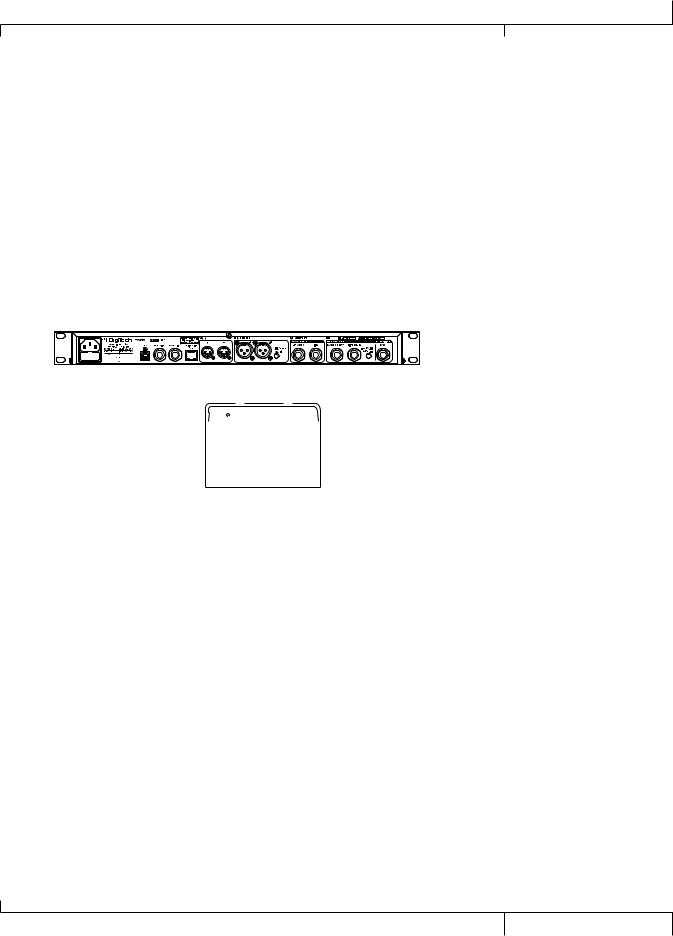
Using the GSP1101
Setup Wizard
The Setup Wizard helps you properly connect and configure the GSP1101 for the most common applications, including:
1.Guitar Amp Input – For the amp that doesn’t have an effects loop. The GSP1101 connects directly to the amplifier’s input.
Connect your guitar to the Input on the GSP1101 front panel.
Connect the GSP1101 Line Output to the amp’s Input.
2.Guitar Amp Loop Return – This setup is for when you want to use the GSP1101 as your main tone and effects source and your amp has an effects loop. The GSP1101 1/4” Line Output connects directly to the amplifier’s effects return bypassing the amp’s tone controls.
Connect your guitar to the Input on the GSP1101 front panel.
Connect the GSP1101
Line Output to the amp’s
Loop Return.
GSP1101 Owner’s Manual
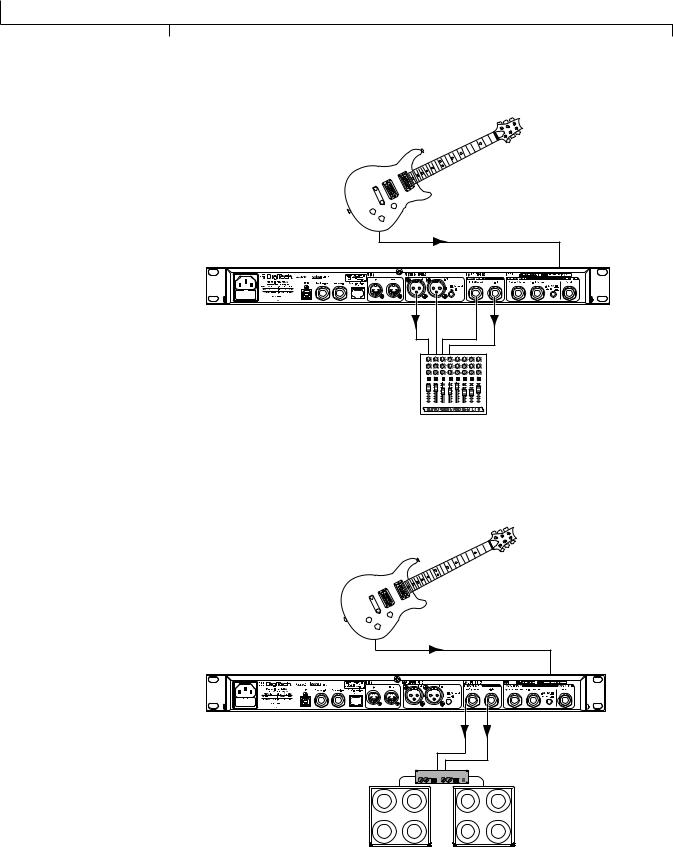
Using the GSP1101
3.Recording/Mixer – Here the GSP1101 is used in a direct recording setup or run through a full range PA system, with no guitar amps.
Connect your guitar to the Input on the GSP1101 front panel.
 OR
OR
1 |
2 |
3 |
4 |
5 |
6 |
Connect the GSP1101 Mixer Outputs or
Line Outputs to the mixer channel inputs. Pan channels hard left and right for proper
stereo imaging.
4.Power Amp/Speaker Cab – For using the GSP1101 as your primary tone and effects source. The guitar plugs into the GSP1101 input and the line output(s) connect to the input of a power amp and speaker setup.
Power Amp with Speaker Cabs
Connect your guitar to the Input on the GSP1101 front panel.
Connect the GSP1101 Line Outputs to the Power Amp inputs.
|
|
GSP1101 Owner’s Manual |
10 |
|
|
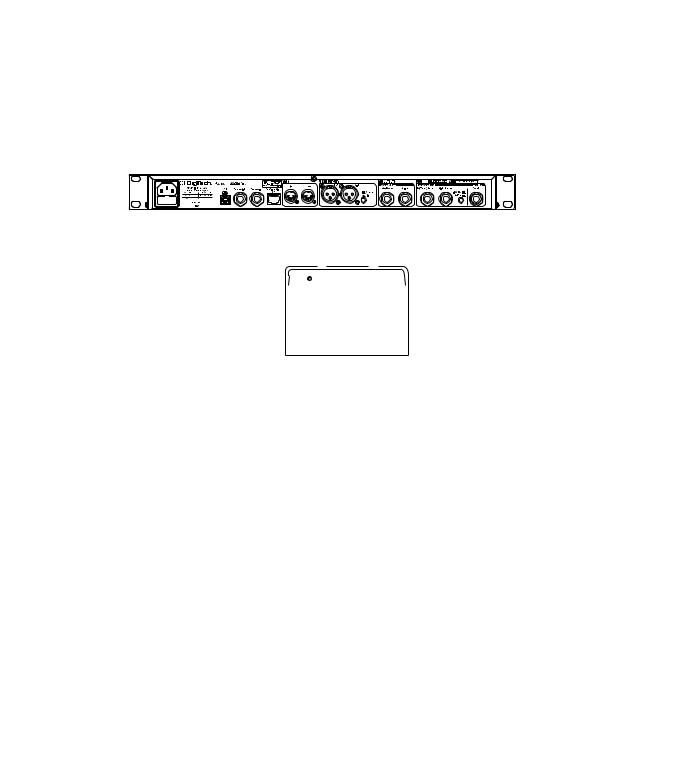
Using the GSP1101
5.Guitar Amp Effects Loop – Utilizes the GSP1101’s post-amplifier modeling effects such as chorus, delay, and reverb. The amplifier effects send is connected directly to the GSP1101 Loop Return, bypassing all pre-amplifier stompbox effects, amp modeling, noise gate and EQ.
Connect the amp’s
Loop Send to the
GSP1101’s Loop Return.
Connect your guitar to the amp’s input.
Connect the GSP1101 Line Output to the amp’s Loop Return.
6.Guitar Preamp/Power Amp – Using the GSP1101 to integrate with an external guitar preamp and power amp configuration.
Connect your guitar to the Input on the GSP1101 front panel.
Connect the GSP1101
Line Out to the Power
Amp inputs.
Power Amp with
Speaker Cabs
Connect the |
|
Connect the |
External Preamp |
|
GSP1101 |
Line Out to |
|
Loop Send to |
the GSP1101 |
|
the External |
Loop Return. |
Preamp |
Preamp Input. |
|
|
11 |
GSP1101 Owner’s Manual |
|
|
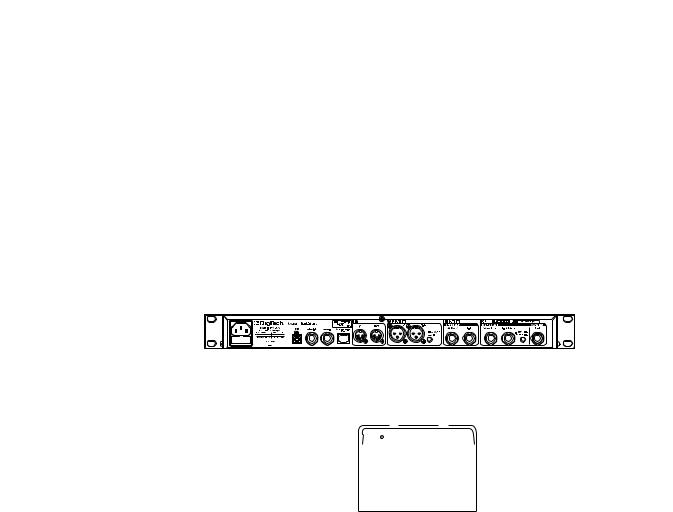
Using the GSP1101
7.Amp Input/Preamp Loop – Integrates the GSP1101 into a guitar amplifier system that has an effects loop. Use this setup when you want to use the tone of your amplifier (rather than the GSP amp modeling) or switch between internal amp models and your amp’s preamp with the pre-amplifier stompbox and post-amplifier effects the GSP1101 offers.
Connect your guitar to the Input on the GSP1101 front panel.
|
|
|
|
|
|
|
|
|
|
|
|
|
|
|
Connect the |
|
|
|
|
||||
|
|
|
GSP1101 Line |
|
|
Connect the |
|||||
|
|
|
Out to the |
|
|
amp’s Loop |
|||||
|
|
|
amp’s Loop |
|
|
Send to the |
|||||
Connect the GSP1101 |
|
Return. |
|
|
|
GSP1101 |
|||||
|
|
|
|
||||||||
Loop Send to the |
|
|
|
|
|
|
|
|
Loop Return. |
||
|
|
|
|
|
|
||||||
amp’s Input. |
|
|
|
|
|
|
|
|
|
|
|
|
|
|
|
|
|
|
|
|
|
||
|
|
|
|
|
|
|
|
|
|
|
|
|
|
|
|
|
|
|
|
|
|
|
|
To use the Setup Wizard
1. Press and hold the Tuner button until the Setup Wizard screen appears in the display
2.The first screen prompts you to select from the seven most common setups we have just reviewed. Use the Edit/Select knob to navigate through these setups and select the one which matches how you’ll connect the GSP1101.
3.The next series of screens guide you through the different options available for your selected type of setup. Respond to each question and make your selections using the
Edit/Select knob.
4.Once all options have been configured, the message Review Your Selections appears. Scroll through these options to ensure they have been answered correctly. Once confirmed, press the Edit/Select knob to complete the configuration process. You’ll exit the Wizard and return to the Preset screen.
The GSP1101 is now optimized for use with your setup.
|
|
GSP1101 Owner’s Manual |
12 |
|
|
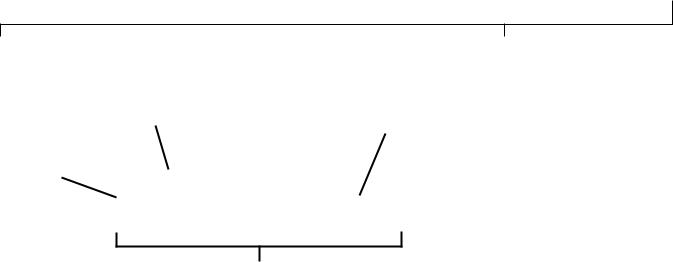
Using the GSP1101
The Preset Screen |
|
Preset Name |
Cab Model |
|
|
Amp Model |
|
Effects (highlighted are active)
When you first turn on the GSP1101, the Graphic display briefly shows the title screen, then the Preset screen appears. Here you can see the preset’s name, what amp and cabinet model are being used, and what effects are active.
The first line in the Preset screen shows the preset’s name in big letters.
The second line of the Preset screen shows the selected amp model on the left, and the selected cabinet model on the right.They are always highlighted with a white background, even if they are turned off in the preset.
The third line of the Preset screen lists abbreviations of the effects. Effects are highlighted with a white background if they are turned on. Effects that are not highlighted are turned off (they have a blue background). The abbreviations for each effect are as follows:
WAH |
Wah |
CMP |
Compressor |
DS |
Distortion |
AMP |
Amp / Preamp / Cabinet |
NG |
Noise Gate |
LP |
Loop (IA for internal amp and EA for external amp when the loop is configured as |
|
a preamp loop) |
EQ |
3-band EQ |
FX |
Modulation / Pitch Effects |
DLY |
Delay |
RVB |
Reverb |
|
|
13 |
GSP1101 Owner’s Manual |
|
|

Using the GSP1101
Selecting a Preset
Turn the Edit/Select knob to choose a preset. By default, presets load automatically. The selected preset name appears in the Graphic display and the preset number appears in the numeric display.
Presets can be set to be loaded manually (see Preset Load on page 51), so that when you turn the Edit/Select knob the new preset name will appear in the Graphic display and the associated preset number will flash in the Numeric display. Press the Edit/Select knob to load the program
Editing a Preset - Tone and Effect Libraries
The GSP1101 is designed to make preset editing and creation easy and intuitive. When creating your own sound, you must first start with an existing preset. Note that the preset you begin with doesn’t have to be in the memory location you intend to have it reside, since you can store it to any User preset location during the store procedure.
The easiest way to start is by using the Tone Library and Effects Library menus. The Tone Library button will let you select from a variety of pre-programmed amp/distortion tones based on different musical styles. The Effects Library button will let you select from a palette of effects chains, from simple delays to full multi-effect signals with modulation, delay and reverb. Use the Effects Level button to increase or decrease the overall Chorus/FX, Delay and Reverb levels if desired. Using these three controls should get you close to a sound you are after. From there you can then use the Edit/Select knob to navigate through the individual effects for some fine tune edits.
To Select a new Tone Library Setting
1.Use the Edit/Select knob to select the preset you wish to edit.
2.If you find a preset close to what you want, you can begin editing the effect parameters by pressing the Edit/Select knob twice and selecting the Effect you want to edit.
3.If you are trying to find something different from the existing presets, begin by using the Tone Library, Effects Library and Effects Level buttons to get close to a sound you want.
4.Press the Edit/Select knob twice to begin selecting the individual Effects to edit their parameters.
When you modify a parameter after selecting a Tone or Effects Library, when you return to the Tone or Effects Library screen you will see “Custom/<xx>” where <xx> is the name of the Tone or Effects LIbrary and Custom means it has been modified.
|
|
GSP1101 Owner’s Manual |
14 |
|
|
